|
Red
Fort |
|
Red Fort is laid outalong the river Yamuna as an irregular
octagon , surrounded by a wall of about 2.4 km in circumference and is built
of red sandstone. The Mughal king Shah Jahan transfered the capital from
Agra to Delhi and
the Fort was completed in 1648. The fort has two main entrances , the
Delhi Gate and the Lahori Gate which faces the famed Chandni Chowk
market.The Fort has Diwan-e-am, and Diwan-e-Khas where the king would grant
audience to the public and would grant audience to important people
respectively . Besides this is the Rang Mahal, the water cooled Apartment
for the royal ladies. In the basement of the fort is a market where
traditional Indian goods can be purchased at nominal rates . Another
attraction is Light and Sound show held in the evenings. |
|
|
|
|
|
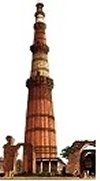 |
|
|
|
Qutub Minar |
|
This magnificent structure in the southern part of the captal
was built by a Muslim King , Qutub-ud-din Aibak in 1199 A.D. A part of it
which he could not finish was completed by another Muslim King Iltutmish.
Minar is 72.5 m high and has as its base a mosque. In front of the imposing
structer is an Iron Pillar believed to have been built in the 5th century
A.D. which has not caught rust ever since it was built. |
|
|
|
|
|
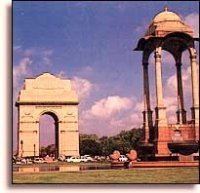 |
|
|
|
India Gate |
|
Straight down the road from Rashtrapati Bhavan is India Gate
which is primarily a memorial to unknown soldier. Designed by Lutyens , the
42 meter high structure is a war memorial in honour of soldiers who died
during the second World War. The structure has an eternal flame (Amar Jawan
Jyoti) to honour the memory of the unknown soldiers. |
|
|
|
|
|
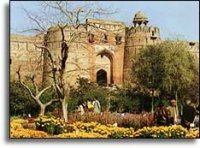 |
|
|
|
Old Fort |
|
The ruins of this fort are located on a small hill which once
stood on the bank of the river Yamuna.Legend has it that the fort marked the
site of Indraprastha ,the magnificent capital of the Pandavas, though the
construction was carried out by Sher Shah Suri any time between 1538 to 1545
A. D. The structure houses a mosque which has a double storeyed octagonal
tower. It is said that the Mughal King Humayun fell from the tower
accidently and died. At the foot of the hill is the lake where the Delhi
Tourism has arrangements for boating and also organises a Sound and Light
Show. |
|
|
|
|
|
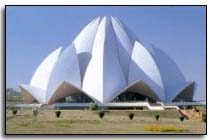 |
|
|
|
Bahai Temple |
|
Is a very recent architectural marval of the Bahai faith and is
visible from several spots in south delhi. Located in Kalkaji in the south
of Delhi. It is Lotus shaped and has rightly been given the name.It is made
up of marble,cement dolomite, and sand. TIMINGS: Summer- 9:00 a.m - 7:00
p.m. Winter- 9:30 a.m - 5:30 p.m. Monday closed |
|
|
|
|
|
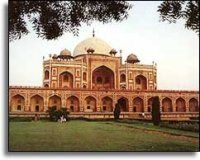 |
|
|
|
Humayun's Tomb |
|
This tomb, which as built by emperor Humanyun's wife, took
eight years to complete. The emperor's wife Begai Begum was buried in the
tomb and the structure is first of its kind built in the center of a well -
planned garden. The combination of white marble and red sand stone was a
great influence on later Mughal architecture. It is generally regarded as a
prototype of the famed Taj Mahal of Agra. |
|
|
|
|
|
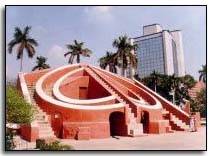 |
|
|
|
Jantar Mantar |
|
Within the Connaught Place are is the Jantar Mantar observatory
built by the Rajput King of Jaipur, Sawai Jai Singh in 1724. It was believed
to have been built with masonary instruments for observing the movements of
the stars and the planets. |
|
|
|
|
|
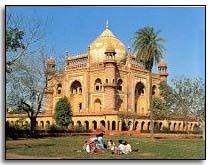 |
|
|
|
Safdarjung Tomb |
|
The garden tomb was built in 1753-54 soon after Safdarjung
died. It is a red and a brown sandstone with double storeyed towers in the
corners and is one of the last example of Mughal architecture. |